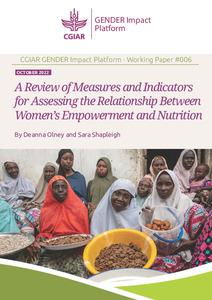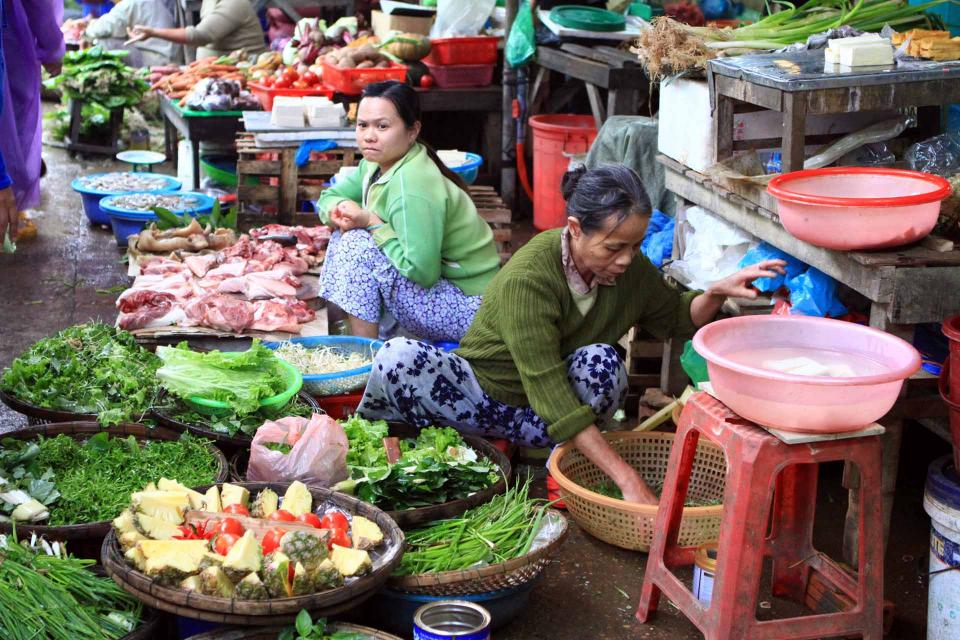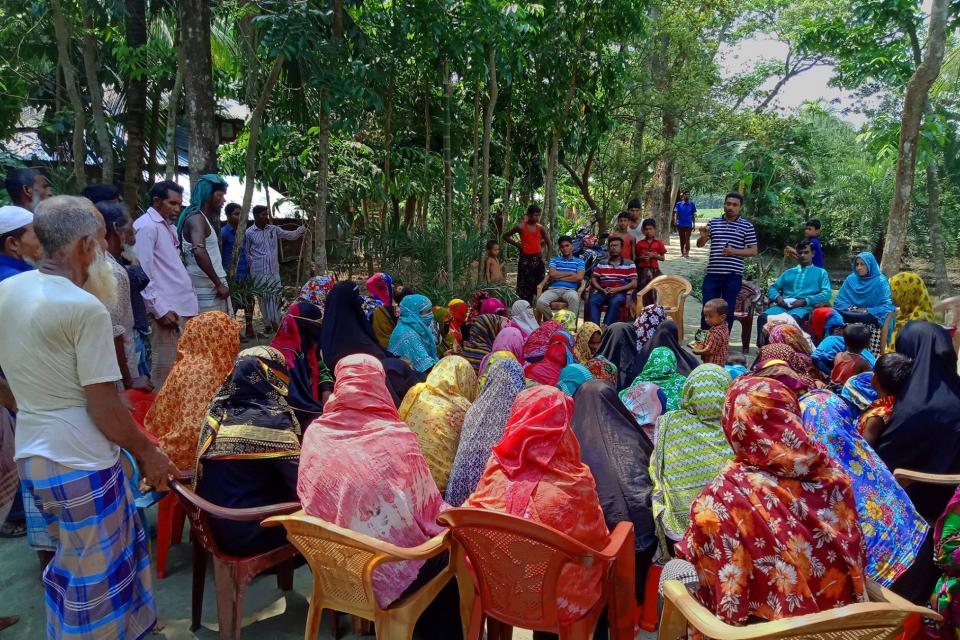More evidence needed on ‘if and how’ women’s empowerment yields improvements in nutritional status and diet outcomes
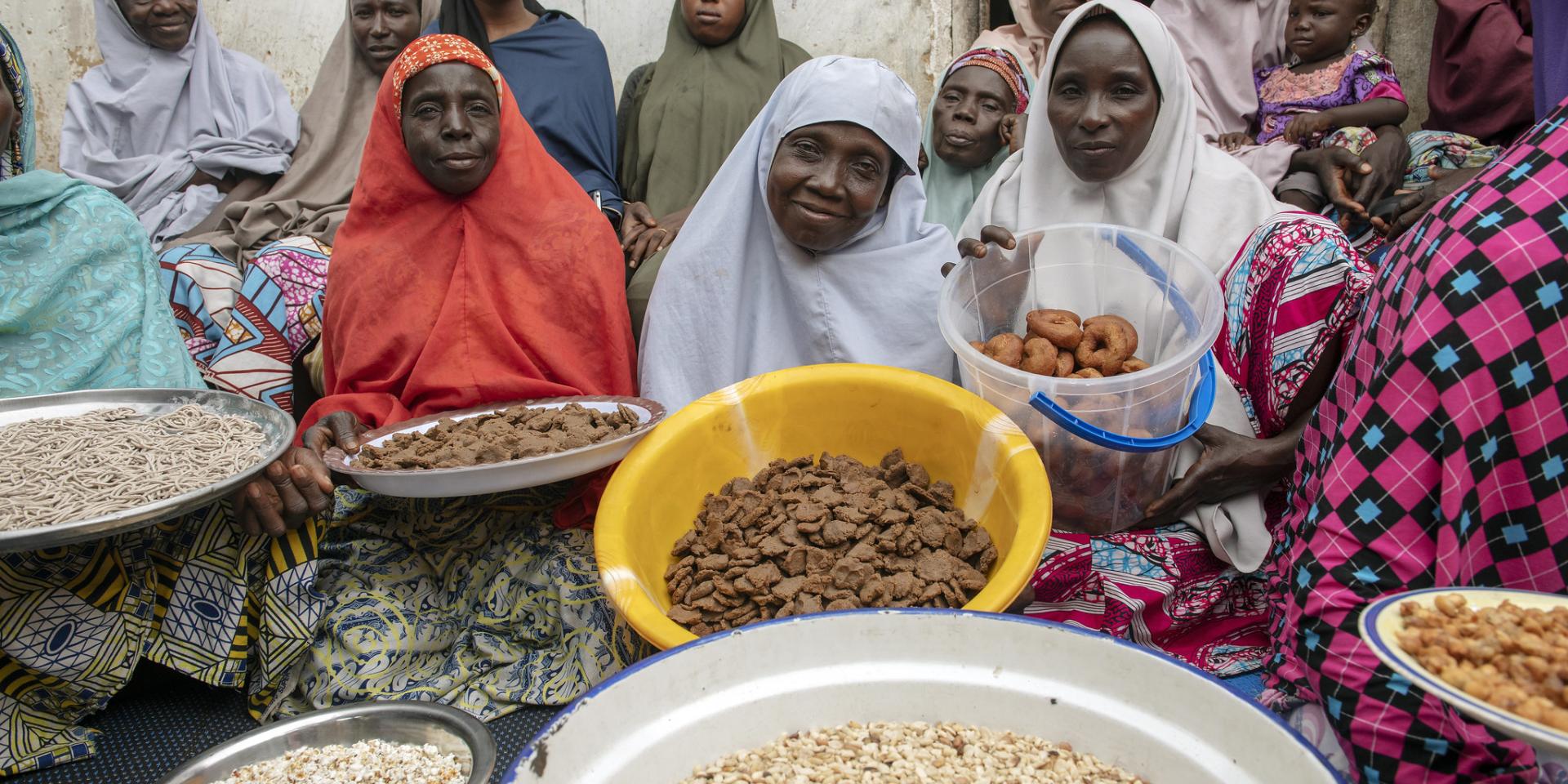 Photo: C. de Bode/CGIAR
Photo: C. de Bode/CGIAR
One third of the world’s population suffers from one or more forms of malnutrition. Many believe women’s empowerment to be a key pathway for addressing this global challenge.
However, according to the speakers at a CGIAR GENDER Impact Platform webinar on women and nutrition last year, there is scant and inconclusive evidence on if, how and to what extent increased empowerment of women delivers positive diet and nutrition outcomes.
To address these issues, the speakers discussed the need for better specificity in describing the hypothetical relationships between components of women’s empowerment and different types of diet and nutrition outcomes and use of methods (e.g. impact evaluations) to establish causality of the specified relationships.
Taken together, increased specificity and identification of causal relationships will help guide program implementers in how best to design programs to improve diet and nutrition outcomes through leveraging one or more empowerment pathways (e.g., improving infant and young child feeding practices through improving decision-making or control of assets or other components).
Literature focuses on linking empowerment with diet, weight, height outcomes
In a recently published working paper, Olney and Shapleigh have identified 40 papers published in the last decade that (a) had at least one diet or nutrition outcome for individuals and (b) included a measure of women’s empowerment.
To identify patterns and gaps in how the relationships between women’s empowerment and nutrition or diet outcomes for women and children have been conceptualized and assessed, they created tables to summarize these.
The five women’s empowerment categories used in the tables were:
- Women’s ability to access resources for households
- Women’s ability to allocate material resources within households
- Women’s ability to allocate time resources within households
- Women’s ability to allocate caregiving resources within households
- Aggregate empowerment measures
Each of these categories were further classified according to the three main dimensions of empowerment: resources, agency and achievements.
The diet and nutrition measures and indicators were divided into three main categories: dietary assessment (such as dietary diversity, consumption of iron-rich foods, minimum meal frequency), anthropometric measures (such as body mass index, weight, height) and biochemical assessment (hemoglobin concentration, anemia, micronutrient status).
As an example, the following tables show the results for allocating material resources within/for households, and diet or nutrition outcomes for (a) women and (b) children.
In the presentation, the speakers used color-coding to illustrate concentrations of studies: the darker the blue, the higher the number of studies that assessed the linkage between a specific women’s empowerment indicator/measure and a specific diet or nutrition outcome.
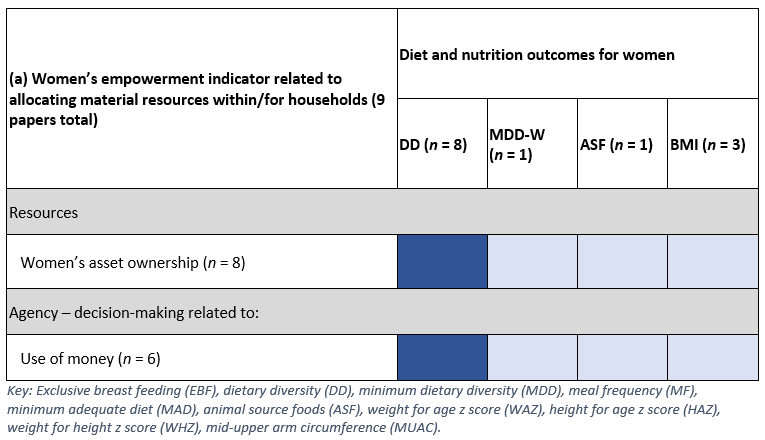
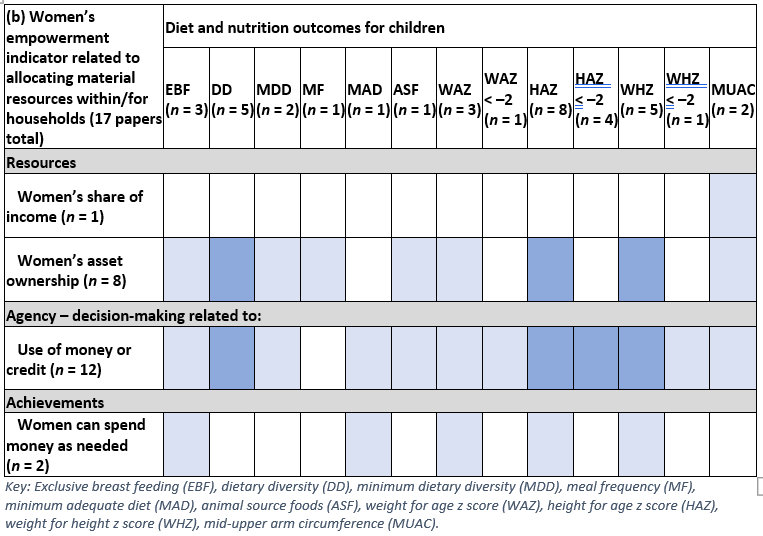
The authors produced five sets of tables generated from the analysis reflected in the example above. They show a focus on linking women’s empowerment with dietary diversity, especially for women. For children, there is also a focus on linking various aspects of women’s empowerment with anthropometric outcomes, such as children’s height for age or weight for height. Only one study looked at the relationships between aspects of women’s empowerment and micronutrient status.
In the example above, the dominant aspects of women’s empowerment are women’s asset ownership or use of money or credit. In other tables, women’s empowerment focused on group membership, women’s use of time, or decision-making related to the care of children or their own care.
However, any one cell in the five sets of tables represents so few papers that the authors argue it is hard to make any clear conclusions about the links between various aspects of women’s empowerment with specific nutrition and diet outcomes.
Another limitation is that the reviewed papers did not pursue specific hypotheses about which women’s empowerment measures might lead to improvement in nutrition outcomes.
“There was basically a full cross-tabulation of associations, rather than being a little bit more hypothesis-driven and investigating why certain domains of empowerment may be affecting certain nutritional or diet indicators for women or children,” Dr Olney said.
Along the same lines, Olney and Shapleigh observed that direct relationships between women’s empowerment measures—such as group membership—and nutrition indicators were assumed to be direct in the reviewed papers. But Dr Olney pointed out that it is not clear what the expected changes are along the pathway of effects from improved empowerment to improved nutrition.
“For example, there is not as direct of a link between belonging to a group and more diverse diets as there would be between giving someone money or food and diverse diets. So, the question in this example would be ‘How does someone go from being a member of a group to having a more diverse diet?’—what are the intermediary outcomes that could be measured to help with inferring causality?” Dr Olney said.
More rigorous impact evaluations needed to confirm if and how empowerment affects diet and nutrition outcomes
While the 40 papers reviewed do indicate some promising associations between various aspects of women’s empowerment and nutrition and diet outcomes, many did not find any associations, and a few found negative associations. In addition, associations varied across the different combinations of empowerment and diet/nutrition measures assessed.
Lastly, there are very few impact evaluations or other studies that have been able to establish causality. In an impact evaluation, one can assess how changes in women’s empowerment are related to changes in diet and nutrition outcomes. This type of evidence is stronger than evidence of association; therefore researchers need to be confident in the conclusions being drawn.
Thus, given all these different factors it is not possible to draw firm conclusions about how, for whom, in what contexts and what specific aspects of women’s empowerment can improve diet and nutrition outcomes, according to Olney and Shapleigh.
Four recommendations for improving evidence linking women’s empowerment to nutrition and diet outcomes
Dr Olney concluded the presentation by providing four recommendations for improving the evidence base linking women’s empowerment with diet and nutrition outcomes:
- Develop hypothetical impact pathways for linking specific diet and nutrition outcomes for women and children to different aspects of women’s empowerment; for example, improving women’s asset ownership and access to money or credit may contribute to improvements in their children’s dietary diversity.
- Design theory-based programs, evaluations and analyses that specify what aspects of women’s empowerment are expected to affect which nutrition or dietary outcome for what population; for example, increasing women’s control over assets may reduce the prevalence of anemia in children under five years old in Burkina Faso.
- Invest in well-designed, rigorous impact evaluations of women’s empowerment interventions that aim to improve nutrition and diet outcomes.
- Include measures of the underlying causes of diet and nutrition problems (such as lack of knowledge, poor practices, failure to seek health care assistance) that may be influenced by gains in women’s empowerment.
“More specific evidence about how various aspects of empowerment will lead to desired nutritional and diet outcomes is needed by policymakers if they are to design effective policies and programs,” concluded Shapleigh.
The presentation discussed findings from a recently published working paper by Olney and Shapleigh.
References
